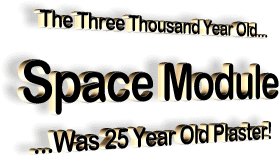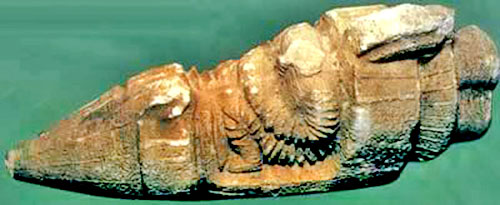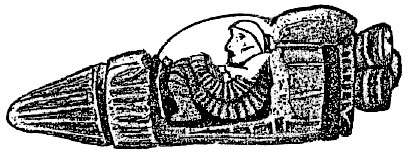|
from
ProjectAvalon Website
One of the theories is that an antique merchant brought it to the museum. The space module, which has five engines is 23 centimeters long and 9,5 centimeters high. The General Director of the Museum Ph. D. Alpay Pasinli said that, the artifact could not be from three thousand years, but rather from 25 years the most.
Pasinli, who said that we should
remember that the western press convinced their public that the
space module was three thousand years old, added that they have
confirmed that this artifact was made out of plaster and marble dust
through the results from analyses.
The space module which was sought after by German and English archeologists in the beginning of the 1990’s was for a long time secured in the preservation unit of the museum.
The first who succeeded in photographing the space module was the English Magazine “Fortean Times”.
The Magazine, which showed a picture of the sculpture and head lined “Is it an ancient space module?” in their October 1993 issue was followed by the German magazine “Magazin 2000”.
After this event the competing firm of Magazin 2000, G.A.R.L. sent their editor to Istanbul and he shared his findings with the public.
But almost all of the research and what was presented to the public was written in this manner:
After these allegations were made it was
written that it was in the Istanbul Archeological Museum but not on
public display.
Sitchin made these remarks after the sculpture left the preservation unit of the museum and was presented to him on a velvet tray:
There are various and contradicting information concerning how and from where the “Space Module” was brought to the Istanbul Archeological Museum.
The most popular idea is that an antique trader brought the sculpture and after realizing that it was fake he didn’t pursue it. The Space module which is 23 centimeters long, 9,5 centimeters high and 8 centimeters wide has five engines.
There is also a pilot figure on the small sculpture that has bent his knees reaching its chest.
The clothing of the pilot resembles the
space suits that astronauts wear.
|


